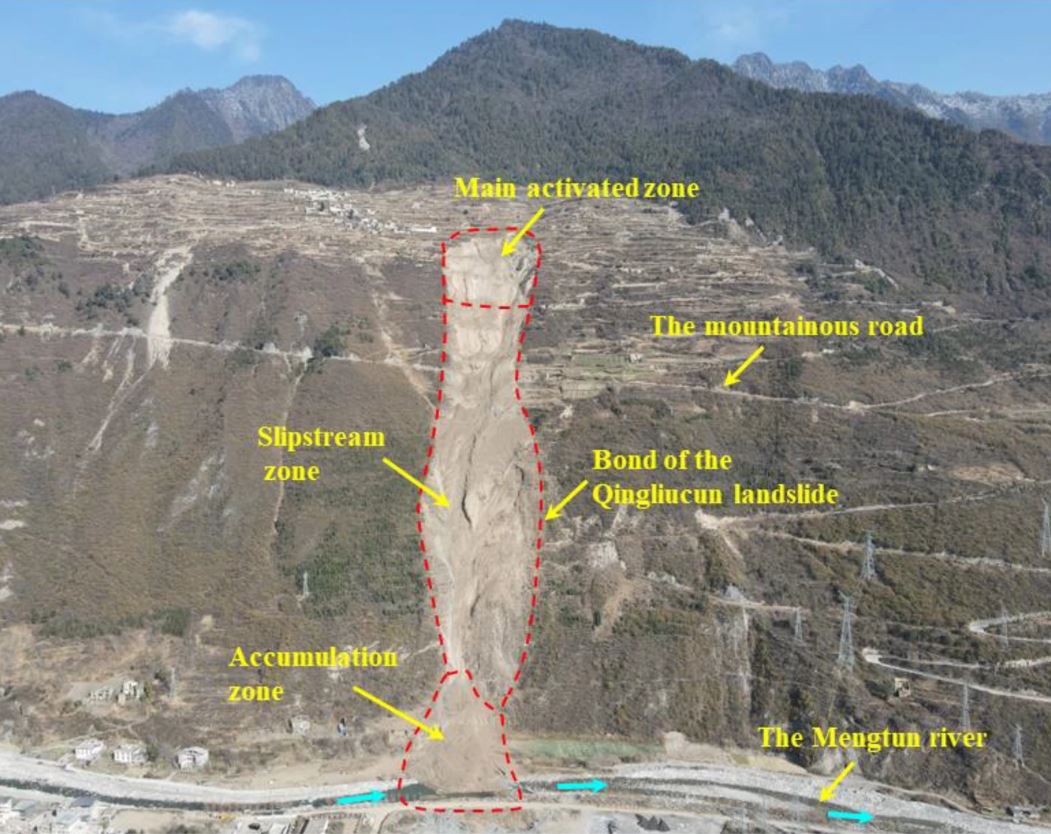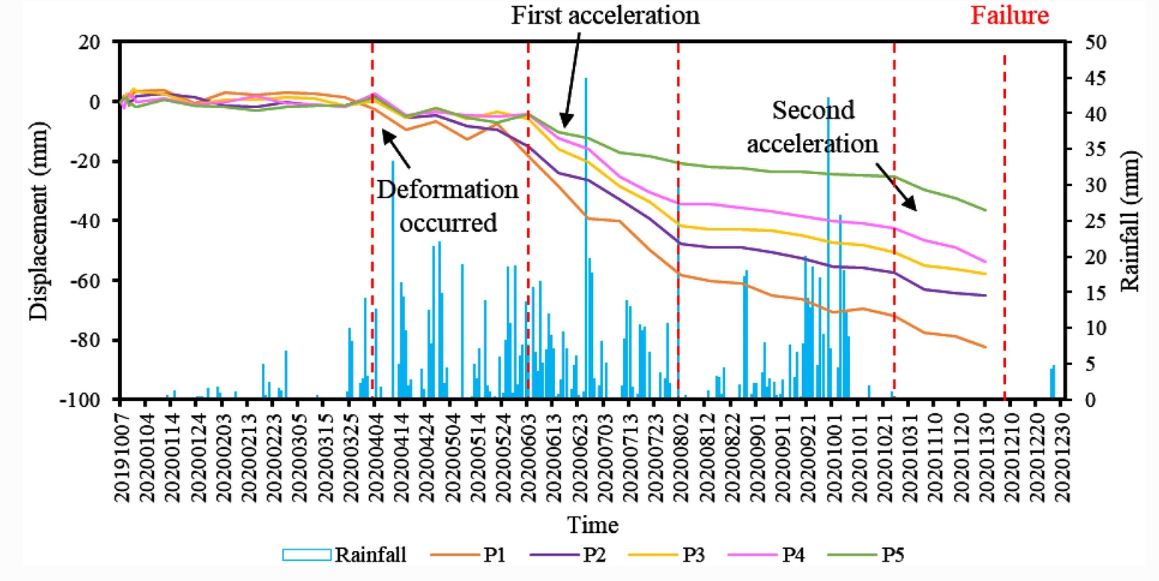4 July 2023
The triggering of slope failure – the Qingliucun landslide
Posted by Dave Petley
The triggering of slope failure – the Qingliucun landslide
On 4 December 2020 a major landslide occurred in the the vicinity of Qingliucun in Sichuan Province, China. Fortunately no-one was killed in the landslide, but it destroyed several houses and briefly blocked the Mengtun River.
This landslide is described in a new paper in the journal Landslides (Xue et al. 2023). This is an image, from the paper, of the aftermath of the landslide:-

The aftermath of the 4 December 2020 Qingliucun landslide in China. Image from Xue et al. (2023).
.
As the image above shows, this landslide involved an initial activation high on the slope that turned into a debris avalanche with a large amount of entrainment. The estimated volume of the initial failure is 24.8 × 104 cubic metres, with a maximum length of 145 m and a maximum width of 225 m. The landslide had a maximum depth of 18 m. The runout distance was about 1,100 m. The materials involved are clay-rich soils.
Deformation of the slope was detected prior to failure, with movement starting months before the landslide.
What I find really interesting about this landslide is an InSAR analysis of movement of the slope by Xue et al. (2023), based on five monitoring points, plotted along with the measured rainfall:-

Movement of the 4 December 2020 Qingliucun landslide in China. Image from Xue et al. (2023).
.
The graph shows the initiation of measured movement in April 2020. In the spring and summer rainy season, the precipitation inputs were large. The landslide responded most notably in the period from June to August 2020, with up to 60 mm of movement being observed. The period through August was less rainy, and the landslide slowed down. There was a second period of precipitation through September and early October, but the landslide appears to have barely responded, with slow rates of creep being noted.
Interestingly, this creep continued after the rainfall ceased around 8 October. There was scarcely any further precipitation input from this point onwards. The second phase of acceleration started in late October 2020, and the Qingliucun landslide failed in early December.
It is intriguing to work out what happened in this period. One possibility was that pore water pressures were still rising more than a month after the end of the rainfall. This is credible, but seems unlikely given the rapid response to rainfall earlier in the movement history. Perhaps more likely is that the deformation by this point was being driven by internal changes in the stress state – the landslide had reached the critical strain, and was now so weak that fail was an inevitable, time dependent, process.
The mechanisms occurring in slopes during these final phases prior to failure remain poorly constrained, but they are fascinating. If I was in a position to lead a research programme (which my day job precludes) then this would be my focus.
.
Reference
Xue, D., Dai, C., Wu, Y. et al. 2023. A catastrophic rainfall-induced high landslide, occurred on December 4, 2020, in the Qingliucun mountainous area of Southwest China. Landslides (2023). https://doi.org/10.1007/s10346-023-02111-w


 Dave Petley is the Vice-Chancellor of the University of Hull in the United Kingdom. His blog provides commentary and analysis of landslide events occurring worldwide, including the landslides themselves, latest research, and conferences and meetings.
Dave Petley is the Vice-Chancellor of the University of Hull in the United Kingdom. His blog provides commentary and analysis of landslide events occurring worldwide, including the landslides themselves, latest research, and conferences and meetings.